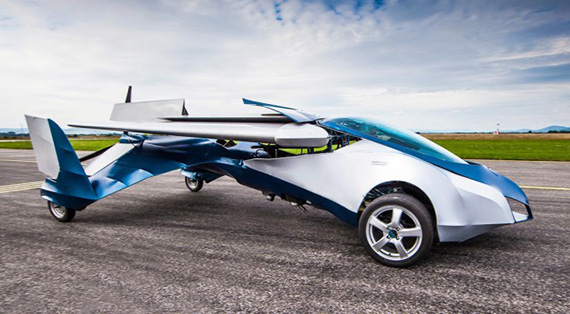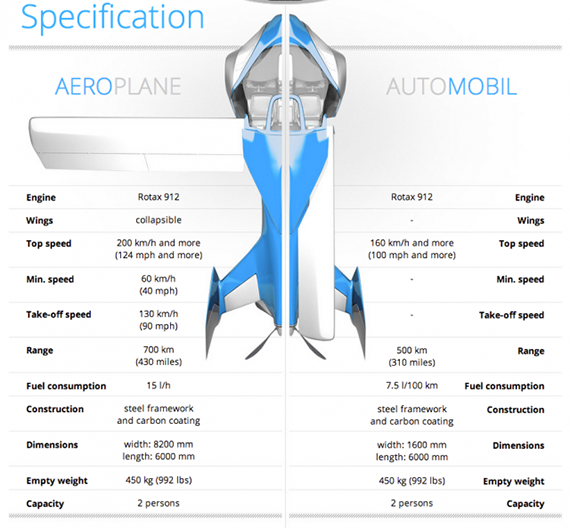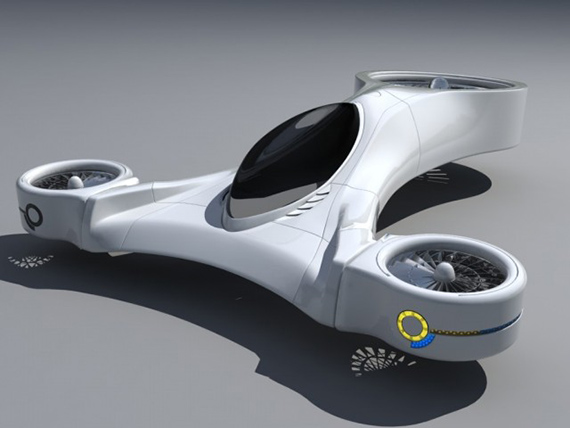The design space for a machine that can roll out of a standard parking spot, unfurl a pair of wings, and hurl itself into the air has been explored as thoroughly as any. Stefan Klein, an engineer from Austria, has been working on such machines for the last 20 years. His latest concept, the Aeromobile 2.5, has some impressive specs, and seems to have little trouble getting airborne. The question that comes to mind when watching footage of the prototype is — can it stay there?
In very round numbers, a minimal drive-fly car (or roadable aircraft, as some say) might weigh in dry at 1000 pounds. At least 100 horsepower is needed to carry aloft enough fuel to fly to 500 miles at 100 mph. These numbers reflect both licensing requirements for light sport craft, and simple parameters reflective of a typical human-scale mission. The Aeromobile stays fairly close to this envelope while several other designs like theTerrafugia go a little bigger, with a little extra carrying capacity and amenity.
Assuming the numbers we just laid out, the primary consideration has traditionally been how to stow the wings. The Aeromobile takes the firefly approach, simple rotating them aft, after folding over the flaps. This method has simplistic appeal when compared to the Terrafugia, which instead collapses its wings accordion style and must introduce potential points of failure throughout their span. Both these designs would seem preferable to dubious Goodyear Inflatoplane, which has long since disappeared from polite discussion. For some reason, the cartoon favorite design — telescoping wings that can just be extruded out from the body — have yet to be realized. We might call vehicles like this CAD cars, because they most likely would only ever really exist in CAD (such as the one pictured below).
Many of these futuristic designs have ducted props, much like the Martin jetpack. The four-prop (quadcopter) design, even those where the wheels tilt down and turn into fans, is still a control disaster. In theory, if the bearings in one prop seize, you could run on three, but that’s not something you want to test. If you are worried about safety, you probably would want to keep the wing, even if it looks like the slightest breeze could turn your craft upside down.
Klein did not just build his machine for his own personal enjoyment; he has full intentions of bring it to a larger market. He expects another couple of years to complete the certification process and to go into production. This is not going to be a craft to get yourself out of traffic jams. Take-offs, and if things go well, landings, will still be airport affairs. Talk of airports brings up an important practical point about engines: Klein’s design uses a Rotax 912 water-cooled aircraft engine, which is light and powerful, but can run on standard unleaded gasoline.
In recent times aircraft and automotive engines have converged to similar near-optimal designs. Aircraft engines are typically more expensive, have special fuel requirements and tolerances, and can be expected to be able to run at full-throttle continuously in typical operation. The torque requirements are also very different for wheels and props. Stein uses two separate drive linkages, one for the front wheels, and one for the rear prop, and two steering wheels in the cab. Overall the concept seems extremely well thought out and executed. If he can just get the nose to point continuously in the same direction as the craft is heading, the design may be an attractive option for those seriously considering getting a flying car.








